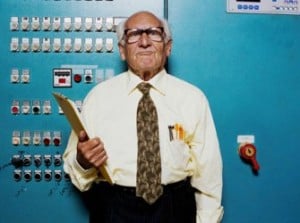
Generations are colliding in the workplace. Millennials, Generation X, and Baby Boomers are all represented in today’s employee population. Until Generation X and Baby Boomers fully exit the workforce, employers are tasked with finding a way to create work environments that are multi-generation-friendly. Employers are using wellness programs to shape corporate culture, and like other aspects of corporate culture, a wellness program must address a generationally diverse workforce.
In a recent article, Dr. Carmella Sebastian recommends that employers should use corporate wellness programs to create a Millennial-friendly culture. Dr. Sebastian cites an Aon Hewitt study that claims helping employees manage their health is key to developing a Millennial-friendly culture. Developing a Millennial-friendly culture is essential as the Millennial population continues to replace the boomer generation in the workforce.

To create a Millennial-friendly culture, employers cannot rely on legacy wellness solutions; instead, employers need innovative Millennial-friendly wellness. A Millennial-friendly wellness program should leverage the technology that Millennials are already using. With over 80% of Americans ages 25-34 owning a smartphone (and this number is likely higher for those in the workplace), offering a smartphone wellness solution makes sense.
A few months ago we wrote about how healthcare needs to take lessons from the automotive industry’s approach to Millennial-friendly technology. Millennials want an accessible and easy to use interface, a fun and enjoyable wellness experience, and a convenient 24/7 mobile-accessible solution. Finding a wellness solution that incorporates these characteristics will make the program more Millennial-friendly.

We agree with Dr. Sebastian’s assessment of the importance of Millennial-friendly culture and wellness, but we also believe that Millennial-friendly and multi-generational-friendly do not need to be mutually exclusive. Employers should not create a Millennial-friendly environment at the expense of non-Millennials. With so much excitement around innovative (Millennial-friendly) wellness technology, it’s easy to neglect non-Millennial employees, but employers should not throw away their legacy wellness features just yet. Wellness is not a one-size-fits-all solution and different generations will respond better to different features of a wellness program. While mobile technology may get Millennials excited about the wellness program, older generations, who are less tech savvy, may be put off by the thought of having a company sponsored wellness program in their pocket. Any mobile wellness program should be complimented by non-mobile features, which employees can engage with from their office desk (hopefully a standing deck…). Recently there have been a number of wellness programs that rely on socializing participation. Millennials may love socializing their wellness participation, but non-Millennials may loath the idea of publically announcing their engagement. Make sure to keep social, mobile, and other features optional to ensure program participation across generations.
When evaluating a new wellness program’s features and ease of use, employers should incorporate feedback from a diverse group of employees. If a wellness solution doesn’t have features that appeal to multiple generations, then it’s probably not the right fit for an age diverse organization.












